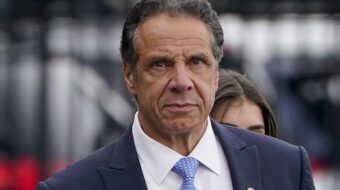Public schools equal, even outdo, private schools
As teachers unions geared up for campaigns to challenge the Bush administration’s troubled education law, the No Child Left Behind Act, up for reauthorization next year, the U.S. Education Department quietly released a blockbuster report concluding that public schools perform as well as, and sometimes better than, private schools.
Reg Weaver, president of the 2.8-million-member National Education Association, said the report showed that public schools were “doing an outstanding job.” If the results had been favorable to private schools, he told The New York Times, “there would have been press conferences and glowing statements about private schools.” The report was released July 14, a Friday. The American Federation of Teachers said this suggested that the administration saw it as “bad news to be buried at the bottom of the news cycle.”
Four days later, congressional Republicans introduced a new $100 million voucher spending bill. Although they said it wouldn’t be taken up until next year, vouchers are seen as a way to mobilize the GOP base for this fall’s elections.
Weaver said, “The administration has been giving public schools a beating since the beginning” to advance its political agenda of promoting charter schools and taxpayer-financed vouchers for private schools.
Instead, the NEA is calling on Congress to fully fund No Child Left Behind, provide for smaller class sizes and establish an accountability system that does not rely only on standardized tests to measure student achievement.
The law, passed in 2001, mandates that all students be proficient in reading, mathematics and science by 2014 regardless of their race, family income, English language proficiency or disabilities. NCLB declared that its goal was to close the gap between low- and high-achieving students by 2014 and to have a “highly qualified teacher” in every classroom by the end of the school year that just concluded. But the mandate has never been fully funded. In 2005 U.S. schools received $9.8 billion less than promised in NCLB. This year, funding will total $12 billion less than promised.
Ten states and many school districts have had their Title I funds cut, making it even more difficult for them to provide tutoring to low-income students, required by NCLB.
Standardized tests are the only means of assessment. Federal funding is tied to what is called Adequate Yearly Progress. When a school does not meet AYP it is labeled “failed.” Students can then ask to be transferred to a “successful” school in the district. But there are never enough places available. A “failed” school can be turned into a charter school, handed to a for-profit management company or even closed.
Last year the NEA, several of its state affiliates and nine school districts filed a lawsuit against the U.S. Department of Education demanding that the federal government pay for the overwhelming cost of the bureaucracy of paperwork and continuous testing required by NCLB. So far the cost is estimated at $27 billion.
They also sought to prevent the government from withholding funds from states that do not comply with the law.
A judge dismissed the lawsuit last fall. The NEA and other plaintiffs have appealed the dismissal. Six states, the District of Columbia, Pennsylvania Gov. Ed Rendell and numerous school administrators and elected officials have filed “friend of the court” briefs supporting the appeal. Bush says he wants NCLB to be reauthorized without changes.
NCLB has “no clear uniform standards,” said Gail Sunderman, an author of a 2006 Harvard University study critical of the law.
The study found that the Department of Education has allowed schools in some predominantly white districts to dodge penalties faced by districts with larger African American, Latino and Asian populations. Behind-the-scenes negotiations have allowed states and school districts to reduce the number of schools listed as failing.
The American Federation of Teachers is also working to change the NCLB with its “Let’s Get It Right” campaign, focusing on the problems of funding, AYP goals, teacher and paraprofessional quality and school improvement.
The AFT represents most teachers and other school workers in urban school districts. AFT members, like NEA members, are pressing their union to do something to relieve the pressure of unrealistic demands on them. Their voices will be heard at the AFT convention this month.
phillyrose623@verizon.net. Terrie Albano contributed to this article.









